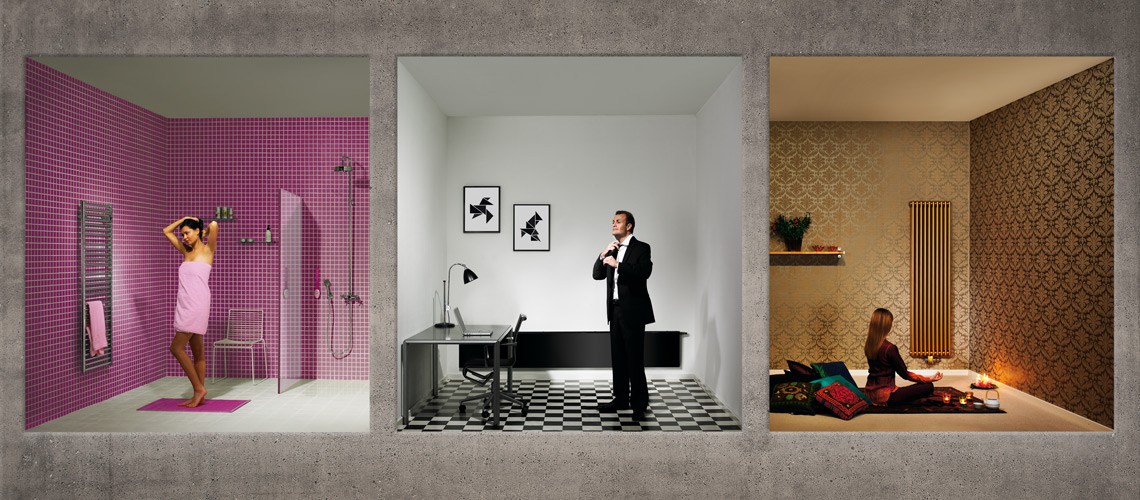Your basket is empty.

Radiators are one of the most important elements of central heating installation, and a well-specified radiator is essential to ensure the homeowner does not waste money or energy on overheating their home.
PURMO offers a multitude of radiators, which cater for all tastes and requirements. Our wide range means that you will be able to find just what you need to complement your personality and your interior – not only in terms of heat outputs and controllability – but in shapes, styles and colours that you probably never knew existed.
Heat loss calculations are essential in order to establish the radiator output and size required in a particular room. The final heat loss figure (given in Watts) can be matched up with a radiator of a similar or higher output. If this figure is underestimated, the room will not reach the required temperature in the depths of winter, and the house will be under heated. If it is overestimated, the room will be overheated and uneconomical. Approximations of the sizing of the radiator in a room can be estimated by using a standard calculation but, for best accuracy, a qualified heating engineer or designer should be consulted.
When calculating the heating requirement of a room, it is important to consider other factors which can affect the rate of heat loss, for example:
Wherever possible, radiators should be installed on the external wall under the window. This way, the cold air flowing in through the window is heated by the radiator and distributed evenly around the room. Also, using several small radiators in a large room rather than one bulky radiator will ensure better heat distribution. The physical size of a radiator is also important, so that the room looks well balanced. There is nothing worse than having a small but high output radiator placed against a large blank wall. In terms of room aesthetics, it is better to pick a larger dimensioned radiator with a lower output per square metre. If a radiator is to be covered; for example, by curtains, the radiator should be significantly bigger to account for reduced heat transfer.
In rooms with high air humidity, such as bathrooms and saunas, panel and decorative radiators should not be used unless adequate ventilation is present. PURMO radiators come with a variety of different connections to suit the nature of the installation, and can be supplied from the side or from below. If a radiator is to be installed under a window, the height of the radiator depends on the distance between the windowsill and the floor. The lower edge of the radiator should be placed at least 10 cm above the floor and the upper one at least 10 cm below the sill.